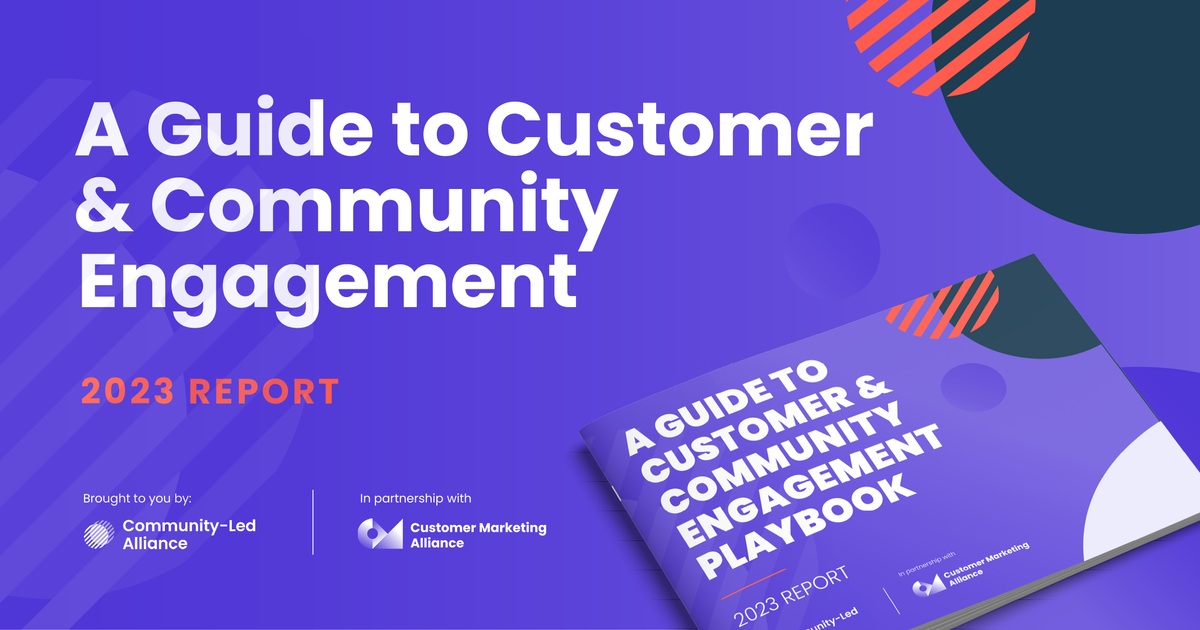The strength of a successful online community in today’s digital world cannot be overstated. Whether it’s a brand, a nonprofit, or a special interest group, community engagement creates not only a loyal following but fosters an environment where members feel valued and motivated to contribute.
But to build a successful community, community managers need to implement a range of engagement strategies designed to encourage day-to-day interactions and the growth of their communities. These strategies enhance interaction across platforms, ensuring that content doesn’t just reach an audience, but resonates with them.
In this article, we’ll outline engagement strategies that will help you not only connect with your community, but help it thrive. Whether you’re looking to revitalize an existing space or are building one from the ground up, these methods will equip you with the tools needed to engage effectively and sustainably.
Leverage social media platforms
Social media is the pulse of community engagement, offering a platform for dialogue, content sharing, and interaction. Knowing how to best utilize social media can dramatically improve your community’s engagement and growth.
Each social media platform attracts different audiences and demographics. For example, LinkedIn is ideal for professionals and career-related content, while Instagram is better suited for visual storytelling or life-style oriented posts. Identifying which platforms your target audience frequents is the first step to tailoring your engagement strategy.

Tips on content creation
Creating content that resonates with your audience involves understanding not just what your community likes, but how they interact with each other. Some strategies include:
- Storytelling: Share stories that connect on an emotional level, whether it’s customer success stories, behind-the-scenes glimpses, or team introductions.
- Educational content: Offer value through tutorials, webinars, or posts that inform and educate.
- Interactive content: Engage users with polls, quizzes, or ask-me-anything sessions to encourage active participation.
- Consistency is key: Regular posting keeps your community engaged and helps establish a reliable presence that members look forward to.
Engaging directly with comments and messages
Direct engagement shows your community is heard and valued. By responding to comments, addressing concerns, and participating in conversations, you boost not only individual membership satisfaction but also build a collective sense of community.
Host regular events and webinars
Another effective engagement strategy for community building is regularly scheduled events and webinars. They play a key role in keeping your community engaged, informed, and connected. Hosting a diverse range of events means you cater to different interests without your community and create opportunities for real-time interaction and learning.
The types of events you could host include:
- Q&A sessions: These can be themed around specific topics where community members have the opportunity to ask questions directly to the experts or leaders. It’s a great way to address common concerns and deepen understanding on particular subjects.
- Workshops: Hands-on workshops provide practical skills or insights, whether it's how to use a new tool, techniques for better productivity, or creative skills like writing or design.
- Guest speakers: Inviting external experts or influential figures to speak at your events can add significant value and draw larger audiences. These sessions can cover industry trends, motivational talks, or success stories that inspire your community members.
Maintaining a regular schedule for events means members have something to look forward to, fostering a sense of anticipation. Diverse formats not only keep engagement fresh and exciting but also cater to different preferences within your community.

Promoting participation and interaction
Of course, putting on the events is only half the battle. You also need to ensure your community members are actively engaging with these events.
Make sure you’re always giving timely announcements about upcoming events, giving your community ample time to plan to attend. Use multiple channels to promote the event, like your email, social platforms, and community announcements. Include interactive elements in your events like live polls, breakout sessions, or Q&A segments to keep the audience engaged.
After the event is over make sure you follow up. Share a summary of the key takeaways, or recordings with those who couldn’t attend to not only provide value to more members but also encourage participation in future events.
Always include a way for attendees to provide feedback on the event so you know what changes to make for future events to ensure they’re more closely aligned with your community’s needs.
Create a reward and recognition system
Acknowledging and rewarding active community members is a powerful way to cultivate an environment where participation is valued. This not only encourages continued engagement but fosters a culture of appreciation that can lead to increased loyalty and motivation.
Recognising those members who contribute regularly or in meaningful ways shows that their efforts are seen and appreciated. This can be a major factor for not only those members, but for others who see that contributions are celebrated. Acknowledgement can help build a positive community atmosphere where members feel encouraged to participate more actively.
Examples of reward systems:
- Badges: Implement a system of badges that members can earn for various activities like posting frequently, helping others, or leading group projects. These badges can be displayed on their profile as a sign of their contributions.
- Shout-outs: Regularly feature outstanding community members in your newsletters, on social media, or within the community platform itself. Highlighting their stories or contributions can serve as great motivation.
- Exclusive content: Offer access to exclusive content, such as specialized articles, videos, or early product releases, as a reward for active community members. This not only rewards them but also adds value to their membership.
- Access to special events: Give recognized members free or early access to events, which can include meetups, advanced training sessions, or Q&A with industry leaders.
By implementing a reward and recognition system, you can significantly increase community engagement. Members feel more motivated when they know their contributions could lead to tangible rewards or recognition.
This motivation often translates into higher activity levels, more content creation, and deeper community interaction. Loyalty builds as members develop a stronger connection to the community, feeling that they are a critical part of its success.

Encourage user-generated content
User-generated content (UGC) is an invaluable resource for any community manager. It not only diversifies the content available on your platform but also creates a sense of ownership and pride among community members. Encouraging members to create and share their own content can lead to higher engagement levels.
Benefits of UGC
- Authenticity: UGC is perceived as more genuine compared to brand-generated content. It reflects real experiences and opinions from within the community, which can resonate more deeply with members.
- Scalability: By leveraging content created by the community, you can scale your content offerings without a corresponding increase in production costs.
- Diversity of perspectives: UGC brings a variety of voices and viewpoints to the platform, enriching the community experience and fostering a more inclusive environment.
Motivating members to share content
So UGC is great, but how do you encourage your community members to create and share their content?
- Challenges and competitions: Organize regular challenges or competitions that prompt members to create content around specific themes. Offer prizes or recognition for the best entries to incentivize participation.
- Featured content: Create a dedicated space where excellent user contributions are regularly featured. This not only rewards contributors but also sets a quality benchmark for other members.
- Supportive feedback: Cultivate an environment where feedback is constructive and encouraging. When members feel supported, they are more likely to share their content more freely.
Make sure you establish clear guidelines for UGC, including what types of content are acceptable or how they should be formatted. This helps maintain consistency of quality and ensures all contributions align with community values.
Implement feedback loops
Feedback loops are essential within community management, serving as a crucial tool for continuous improvement. Effectively gathering and utilizing feedback can drive significant engagement and member satisfaction.
Continuous feedback allows for ongoing refinement of community strategies, services, and content, ensuring you’re always meeting the growing needs of the community. By regularly soliciting feedback you demonstrate that your member’s opinions are valued, increasing satisfaction and loyalty. Feedback can also spark ideas for new features, events, or content that can better serve the community.
Techniques for gathering and implementing feedback:
- Surveys and polls: Regularly distribute surveys or polls to collect quantitative and qualitative data about various aspects of the community experience.
- Feedback channels: Establish dedicated channels where members can provide feedback at any time, such as a forum thread or a feedback form on your website.
- Engagement metrics: Analyze engagement metrics to indirectly gather feedback. Metrics like participation rates, bounce rates, and time spent on the platform can offer insights into areas needing improvement.

Develop a strong onboarding process
A community member’s first impression can significantly influence their decision to stay engaged or not. A strong onboarding process not only helps retain new members, but also sets the tone for future interactions in the community. It’s a crucial step in ensuring members feel welcomed, informed, and connected from the get-go.
Creating an effective onboarding experience
Creating an effective onboarding process involves a number of key steps. Start by clearly communicating what new members can expect and how they can benefit from the community. Simplify the sign-up and login process to avoid early drop-offs.
Immediately after sign-up, guide new members through a well-structured welcome sequence that might include an introductory video, a tour of the community platform, and initial engagement prompts like introducing themselves in a welcome thread or participating in a newcomer challenge.
But engagement doesn’t stop at the welcome message; follow up with emails or messages that offer further information about community resources, upcoming events, and ways they can get involved. It’s also helpful to connect new members with community ambassadors or mentors who can provide support and encourage active participation.
Utilize interactive content
Interactive content is a powerful tool in the arsenal of community engagement strategies. By incorporating elements that require active participation from users, you can significantly increase the frequency of their engagement with the community.
Interactive content can take many forms:
- Polls and surveys: Simple and effective, polls can be used to gather opinions, start discussions, or make decisions in a way that involves the community’s voice.
- Games: Integrating games related to the community's theme can be a fun way to keep members engaged. These might be trivia games about community-related topics or challenges that reward users for participation.
- Interactive videos: Videos where users can make decisions that influence the outcome can be particularly engaging. This format is great for educational content, where viewers can choose their own learning paths.
Interactive content not only makes the community more lively and fun but also brings several key benefits like increasing the time members spend on the platform, enhancing their learning, and serving as an effective way to collect data about member preferences and opinions, which can inform future engagement strategies.
Focus on community building, not just management
Managing a community effectively goes beyond simple administration; it involves actively fostering a strong sense of belonging and culture that can sustain and grow the community.
Shifting focus from management to proactive community building can significantly enhance member engagement and contribute to a healthier, more vibrant community.
Community management often involves logistics and operations, such as moderating content and managing member issues. However, proactive community building requires a different approach — one that focuses on creating meaningful relationships among members.
This can include initiating discussions that matter to members, creating shared goals, and encouraging collaboration and support among the community.
Here are some ways to foster a sense of belonging and community culture:
- Personalized engagement: Address members by name, acknowledge their achievements, and respond to their contributions in a personalized way to make them feel valued and recognized.
- Shared values and goals: Clearly communicate the community's values and goals, and regularly highlight how members' activities contribute towards these aims. This can help align individual efforts with the larger community purpose, enhancing cohesion and commitment.
- Inclusive environment: Ensure that the community is welcoming to all members by promoting diversity and inclusion. This can involve celebrating cultural events, supporting various languages, and facilitating discussions around inclusivity.
A healthy community is characterized by active participation, mutual respect among members, and a shared sense of purpose.
The health of a community directly influences its engagement levels and potential for growth, as members that feel a part of a thriving community are more likely to remain active and engaged over time. They’re also more likely to become advocates for the community, attracting new members.

Final thoughts
Community engagement isn’t a static endeavor, it requires ongoing effort and continual adaptation to meet the changing needs and expectations of your community members.
The strength of a community lies in the engagement of its members. By fostering an environment that values participation, recognizes contributions, and adapts to the needs of its members, you’re building more than just a community, you’re nurturing a vibrant, dynamic, and sustainable ecosystem.
Download our guide to customer and community engagement for tips on how to best engage with your community - and deliver results.





